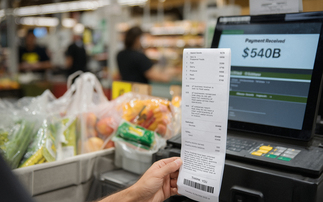A more circular economy can help us hit SDG12 and many of the UN goals, argues Joss Bleriot from the Ellen MacArthur Foundation
The UN's Sustainable Development Goals (SDGs) set out a vision for the future in which global economic prosperity aligns with social inclusion and regeneration of the environment. They are ambitious and require an overhaul of entire systems, which is proving to be a significant challenge. As the 2019 Europe Sustainable Development Report finds, even the countries making the most headway are currently not on course to hit their targets.
Accelerated progress is needed towards SDG 12, sustainable consumption and production, as well as action on climate issues (SDG 13), protection and conservation of biodiversity (SDGs 14 and 15), and agriculture and food systems (SDG 2).
The circular economy presents an opportunity to target tipping points rather than taking incremental steps towards the SDGs, by tackling the root causes of global challenges. We can redesign systems so that they effectively utilise resources rather than using them up — eliminating waste and pollution, keeping valuable products and materials in use, and regenerating natural capital in the very ways we create the things we need.
The circular economy took a prominent place at the last United Nations Environment Assembly, and features heavily in the Sustainable Consumption and Production resolution adopted by member states in the closing plenary session. By transforming how we make and use products, the circular economy provides a clear framework to achieve a state of responsible consumption and production (SDG 12). Due to the inherent material and energy intensity of heavy industries — such as cement, steel, plastic and aluminium — they offer extensive opportunities in their transformation, even if by nature some prove challenging to shift through traditional efficiency measures.
Approaching half of the aluminium currently produced each year does not reach the final product it is intended for. Instead, during casting, fabrication and manufacturing large amounts of aluminium becomes scrap. While the ‘new' scrap is collected, a proportion of it is not returned for remelting or refining. Meanwhile some 15 per cent of building materials are wasted in construction. To achieve SDG 12 and make the most of our resources, this waste must be designed out.
In the plastics sector, efforts to eliminate the items we don't need, innovate so that plastics we do need are designed to be safely reused, recycled or composted, and ensure this happens in practice, are underway. If they are adopted fully we will be able to considerably reduce our reliance on finite resources in plastics production. Demand for recycled content is rising. Signatories of the New Plastics Economy Global Commitment alone are expected to use enough recycled plastic by 2025 to avoid extracting 25 million barrels of oil every year.
Efforts to achieve SDG 12 also provide solutions to other SDG challenges. Tackling climate change (SDG 13) is a clear example of this. Moving to renewable energy can only address 55 per cent of global greenhouse gas emissions as the remaining emissions are produced in the ways we make products. Adopting a circular economy framework for the steel, plastic, aluminium, cement, and food industries can achieve a reduction of greenhouse gases totalling 9.3 billion tonnes in 2050.
A circular economy for food has further potential to become climate positive, using regenerative agriculture practices to improve the health of soil and effectively sequester carbon. Such a food system can also reduce edible food waste, working to achieve SDG 2 (zero hunger) and food by-products can be collected to make new food or can be cycled back to the land, to make the most of the nutritional content available. Better use of available nutrients improves crop yields and makes them more resilient to disease and weather events as well as reducing our reliance on synthetic fertilisers. Some 95 per cent of fertilisers do not provide nutrients to the human body and mismanagement of chemical inputs has caused damage to people's health and the ecosystems surrounding farmland. Their removal from the food system therefore helps us to address SDGs 14 and 15 — life below water and life on land — as well as health issues (SDG 3).
Many of the circular economy changes that are needed are in their early stages and further education, investment and innovation is still required to catalyse change. However, there are signs of early progress and a growing awareness of the vital role circular economy can play in the achievement of the SDGs.
Joss Bleriot is institutional engagement lead at the Ellen MacArthur Foundation. He represents the Foundation at the European Commission, and manages the relationship with governments and supra-national bodies such as the United Nations, the G7 Resource Alliance, the OECD and the World Economic.







